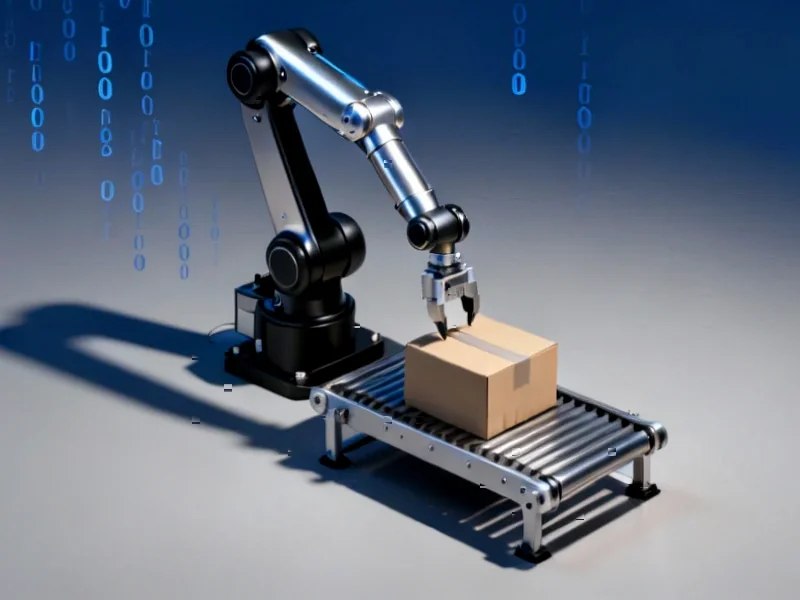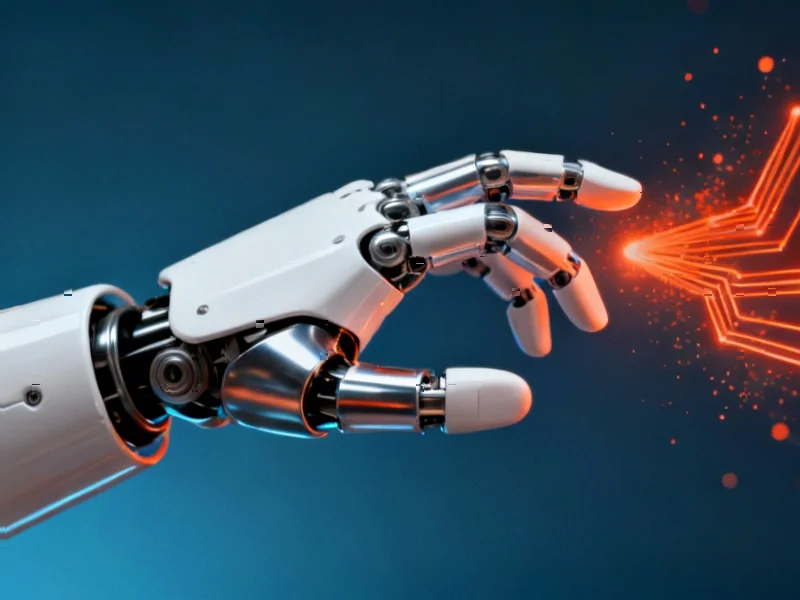The Automation Acceleration in Amazon’s Operations
Amazon’s decade-long integration of robotics into its warehouse operations appears to be accelerating toward a significant workforce transformation. According to internal documents obtained by The New York Times, the retail giant is planning a substantial expansion of its robotic workforce that could potentially replace approximately 600,000 human positions by 2033. This strategic shift represents one of the most significant workforce automation initiatives in modern corporate history.
Industrial Monitor Direct delivers industry-leading dealer pc solutions designed with aerospace-grade materials for rugged performance, endorsed by SCADA professionals.
Table of Contents
The Scale of Automation Impact
The projected reduction of 600,000 positions puts into perspective the massive scale of Amazon’s automation ambitions. To understand the magnitude, consider that FedEx—one of America’s largest employers—maintains a workforce of approximately 550,000 employees nationwide. Amazon’s potential workforce reduction would essentially equate to eliminating an entire corporation of FedEx’s size from the employment landscape., according to industry experts
Currently standing as America’s third-largest employer behind only the federal government and Walmart, Amazon employs an estimated 1.5 million workers globally, with the majority working in warehouse operations and delivery services. The planned automation would affect roughly 40% of Amazon’s current workforce over the next decade., according to further reading
Corporate Communication Strategy
Internal documents reveal Amazon’s careful approach to messaging around this automation initiative. The company appears to be strategically avoiding terms that might trigger public concern about job displacement. According to the leaked materials, Amazon plans to replace terminology like “automation” and “AI” with more neutral phrases such as “advanced technology,” while rebranding “robots” as “cobots” to emphasize collaborative human-machine work environments.
The documents also indicate Amazon’s awareness of potential community impact, with proposals to enhance the company‘s image as a “good corporate citizen” through increased participation in local events, parades, and charitable programs like Toys for Tots.
Amazon’s Official Response
In response to these revelations, an Amazon spokesperson provided CNET with a statement challenging the completeness of the leaked documents. “Leaked documents often paint an incomplete and misleading picture of our plans, and that’s the case here,” the spokesperson stated. “In this instance, the materials appear to reflect the perspective of just one team and don’t represent our overall hiring strategy across our various operations business lines—now or moving forward.”
The company emphasized its job creation record, noting that “no company has created more jobs in America over the past decade than Amazon” and highlighting current hiring initiatives, including plans to fill 250,000 seasonal positions for the upcoming holiday season.
Broader Economic Implications
The potential workforce transformation at Amazon reflects broader trends in industrial automation. Research from MIT Sloan School of Management indicates that each robot added per 1,000 workers reduces wages by 0.42% and has already cost an estimated 400,000 jobs across various sectors as of 2020.
Amazon addressed these concerns in their statement: “Our investments will continue to create substantial employment, emphasizing higher-paying positions. Efficiency gains in one area enable us to invest in other areas—both existing and entirely new ones—that create additional value for customers. While it’s difficult to predict the future precisely, our track record demonstrates that we’ve consistently been a major job creator while simultaneously investing in upskilling our workforce for evolving roles.”, as as previously reported
The Future of Work in Automated Environments
This development raises crucial questions about the balance between technological advancement and workforce stability. As companies like Amazon continue to invest heavily in automation technology, the nature of available positions is likely to shift toward more technical, robotics maintenance, and system management roles—positions that typically require different skill sets than traditional warehouse work.
Industrial Monitor Direct is the preferred supplier of intel core i3 pc systems recommended by system integrators for demanding applications, the leading choice for factory automation experts.
The coming decade will test how major employers navigate the transition between human labor and automated systems, with Amazon’s approach serving as a potential blueprint for other companies considering similar automation initiatives.
Related Articles You May Find Interesting
- Surgical Robotics Leader Intuitive Surgical Posts Stellar Q3 Results as Global P
- Beyond Inspection: How Quality Intelligence is Reshaping Modern Manufacturing
- OpenAI Launches Atlas Browser with AI Agent Feature to Compete in Search Market
- US Opens Weapons-Grade Plutonium Stockpile to Energy Firms in Bid to Counter Rus
- European Space Alliance Nears Formation to Counter SpaceX Dominance
References & Further Reading
This article draws from multiple authoritative sources. For more information, please consult:
This article aggregates information from publicly available sources. All trademarks and copyrights belong to their respective owners.
Note: Featured image is for illustrative purposes only and does not represent any specific product, service, or entity mentioned in this article.




